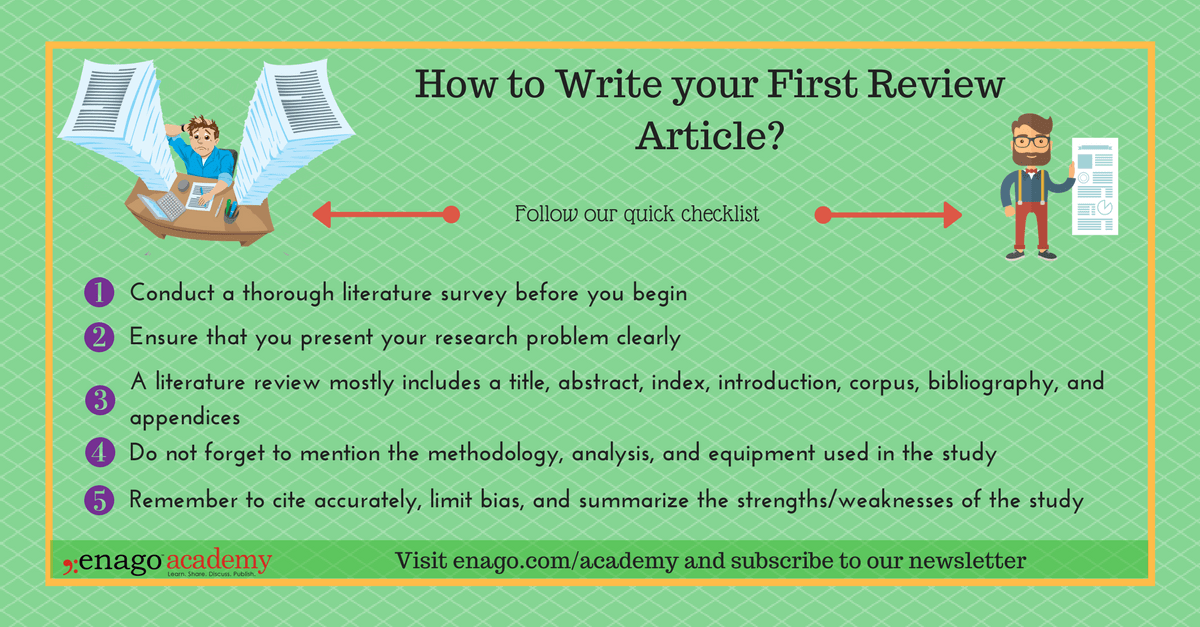Writing a Research Literature Review? — Here are tips to guide you through!

Literature review is both a process and a product. It involves searching within a defined source of information related to your research topic and then creating a comprehensive summary of the pertinent research on your topic. It is most certainly over a topic that has further scope for developing a research question.
Often, early career researchers find writing a literature review difficult and are unsure about the best way to structure their review and produce an effective research literature review. To make this process simpler, it is important that researchers understand the concept of literature review and the purpose behind it.
This article explains what a literature review is and how one can write an effective research literature review with the help of literature review examples.
Research Literature Review in Academia
If you are proposing a research topic that has a substantial amount of previously published work already, the prospect of delivering a good literature review can be a daunting task because a researcher will not only have to refer to journals, books, and articles, but also cite them!
In simpler words, a literature review is a critical collation of data from different sources relevant to your topic of research.
What Are the Four Major Types of Literature Reviews?
Based on their structure and formulation, literature reviews are broadly classified as-
1. Narrative or Traditional Literature Reviews
A narrative or traditional literature review is a comprehensive, critical, and objective analysis of existing knowledge of the topic. Literature review is an essential part of the research process because it helps establish theoretical framework and context for research study.
2. Scoping Reviews
A scoping review aims to identify the nature and extent of research evidence. As its name suggests, a scoping review is an ideal tool to determine the scope of literature on a given research topic.
3. Systematic Literature Reviews
A systematic literature review identifies and helps select research in order to answer a clearly formulated research question. Furthermore, a systematic review follows a defined protocol or plan where the criteria is clearly stated before the review is conducted.
4. Cochrane Reviews
Cochrane reviews are gold standard reviews; which are clearly reported and methodically better than systematic reviews. Moreover, this review systematically compares the risk of bias (RoB) in Cochrane and non-Cochrane systematic reviews using the dataset compiled in their database.
Outline of a Research Literature Review
Irrespective of the type of literature review, the three main components remain constant. A good research literature review consists of:
- Introduction
- The body of the literature review
- Conclusion
Keeping these components in mind, the length of a literature review is not restricted to a word limit. It differs with respect to its purpose, audience, and discipline. Ideally, a research literature review written for a dissertation or thesis can be constructed into a full-length chapter of 20 pages.
What Is the Purpose of a Literature Review?
You may be tempted to save time by restricting your review to the last moment, but this can be a critical failure point. The purpose of writing a literature review is to establish your authority in your research. Without that established authority, your research findings are dismissed as nothing but your opinions founded on some basic methodologies.
What Should Not Be Included in a Literature Review?
A poorly executed scientific literature review can destroy a research thesis in four ways:
- If you can’t demonstrate that you have done the background work, you have no credibility as a researcher to recommend future research.
- If you haven’t mapped out the depth and breadth of the currently available material, you have no way to develop a cogent structure for the material you want to present as the foundation for your work.
- In the absence of a comprehensive summary of the material, you have no way to justify the position of your proposed research. Are you filling an identified gap, addressing identified weaknesses in someone else’s work, or perhaps extending an existing study to a broader or new population sample?
- If your research literature review isn’t comprehensive, you lose context when attempting to critique any of the previously published material.
Tips to Write a Good Literature Review
To write a good scientific literature review, you have to begin with a clear understanding of the role it plays in executing a thorough review for academic research:
- Context – where does your research project fit into the overall body of knowledge?
- Make a list of keywords to search your sources relevant to your research question
- Identify the key concepts/variables that apply in this area of research
- Identify the relationships between those concepts/variables
- Establish the need for further research – inconsistencies, lacking evidence, opportunities for further development, or alternative methodologies.
Refer to the literature review example for a better understanding.

Points To Remember
Demonstrate Command of the Material
It’s not about maximizing the quantity of material reviewed, nor should the objective be to read “everything” about your proposed topic – for some topics that would be a physical impossibility.
Focus on the relevance of the material to your proposed topic, and map out a logical framework for analyzing that material. Develop relationships that make sense within that framework and organize your review around ideas not tenuous links by researcher or subject or chronology.
Don’t Ever Try to Fake It
Only include the material that you actually read – cutting and pasting someone else’s bibliography will come back to bite you later – especially if you have to do an oral defense and someone asks for your thoughts on a specific article or study.
Remember that just having read a dissertation or conference paper doesn’t count – you must critique it – what worked, what didn’t, and what would you do differently?
It’s All About Making Sense
Your reader should reach the end of your research literature review with a sense of full comprehension as to how your proposed study fits together with the current body of published work:
- You’re attempting to fill an identified gap
- You’re proposing to address an identified shortcoming
- You’re revisiting an inconclusive research summary
- You’re challenging an established theory
- You’re developing a limited study in more detail.
Have you ever faced any challenges in writing a research literature review? Write to us or email us at academy@enago.com and tell us how you overcame those challenges!











QUITE INFORMATIVE TIPS TO CONSIDER THROUGHOUT MY LITERATURE REVIEW. THANK YOU FOR COMING OUT HANDY
Very insightful and useful tips. I will use them in my study. Thank you, much appreciated